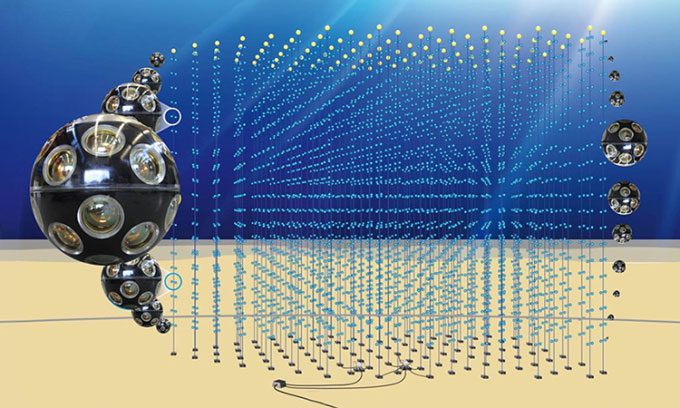Chinese scientists are developing a gigantic telescope to observe neutrinos from beneath lakes or deep seas.
Chen Mingjun, the lead researcher for the project at the Institute of High Energy Physics under the Chinese Academy of Sciences, stated that the telescope will be designed with a volume of approximately 30 km³ and installed at a depth of over 1 km below the water surface. The purpose of constructing this underwater facility is to detect high-energy neutrinos.
Neutrinos, often referred to as “ghost particles,” have an extremely small mass, so small that they were once thought to be massless. They are the second most abundant particles in the universe, after light particles (photons). While charged particles are affected by magnetic fields, neutrinos can travel through the universe in a straight line without being obstructed.
Astronomers believe that neutrinos are generated from outside the solar system. Therefore, detecting them via telescopes will contribute to unraveling the century-old mystery of the origins of cosmic rays.
In 2021, China’s Large High Altitude Observation Station (LHAASO) detected 12 gamma-ray sources believed to originate from the same source as cosmic rays. A common hypothesis is that high-energy neutrinos and gamma rays are produced simultaneously when high-energy cosmic rays are triggered.
“If we can detect both types of particles together, we can determine the origin of cosmic rays,” Chen explained.

Underwater neutrino detector prototype. (Photo: Space Science)
As neutrinos pass through water, they interact with atomic nuclei and generate secondary particles. This process emits light signals that underwater detectors can capture. Some studies have suggested this possibility, and Chen believes that the underwater neutrino hunting facility could trace the origins of mysterious cosmic radiation.
Regarding the decision to deploy the telescope at depths of up to 1 km, Chen mentioned that this water zone lacks sunlight, and due to the absence of photosynthesis, there are no fish or microorganisms. Clean water will enhance the chances of detecting neutrino signals.
Similar underwater neutrino detectors around the world include the IceCube Neutrino Observatory located near Antarctica and the Baikal-GVD neutrino telescope in Lake Baikal, which have scales of only 1 km³ and 0.5 km³, respectively. China’s planned detector will be significantly larger, comprising a 30 km³ telescope with over 55,000 optical modules suspended along 2,300 strings.
In February, Chen and his colleagues completed their first marine test to evaluate the detection system at a depth of 1,800 meters underwater. Most team members have spent years researching cosmic rays and have previously participated in the LHAASO project, a massive cosmic ray detector located at an altitude of 4.41 km above sea level in Sichuan Province, southwest China.
However, hunting for extraterrestrial neutrinos from deep water is more challenging than from mountainous regions. Chen added that the current challenges his team faces include developing detectors that meet higher waterproofing requirements, as well as the high costs associated with underwater equipment and operations.


















































